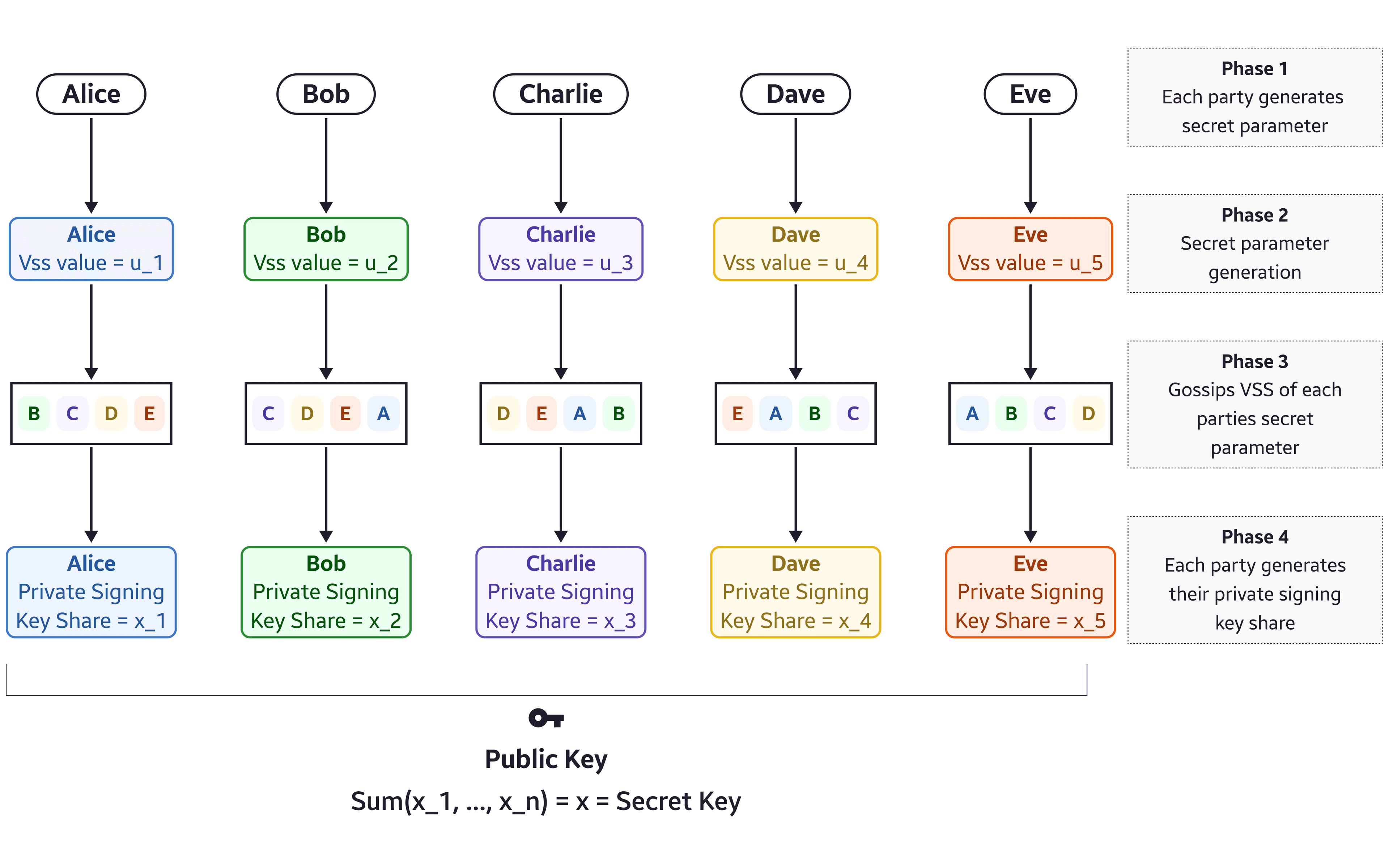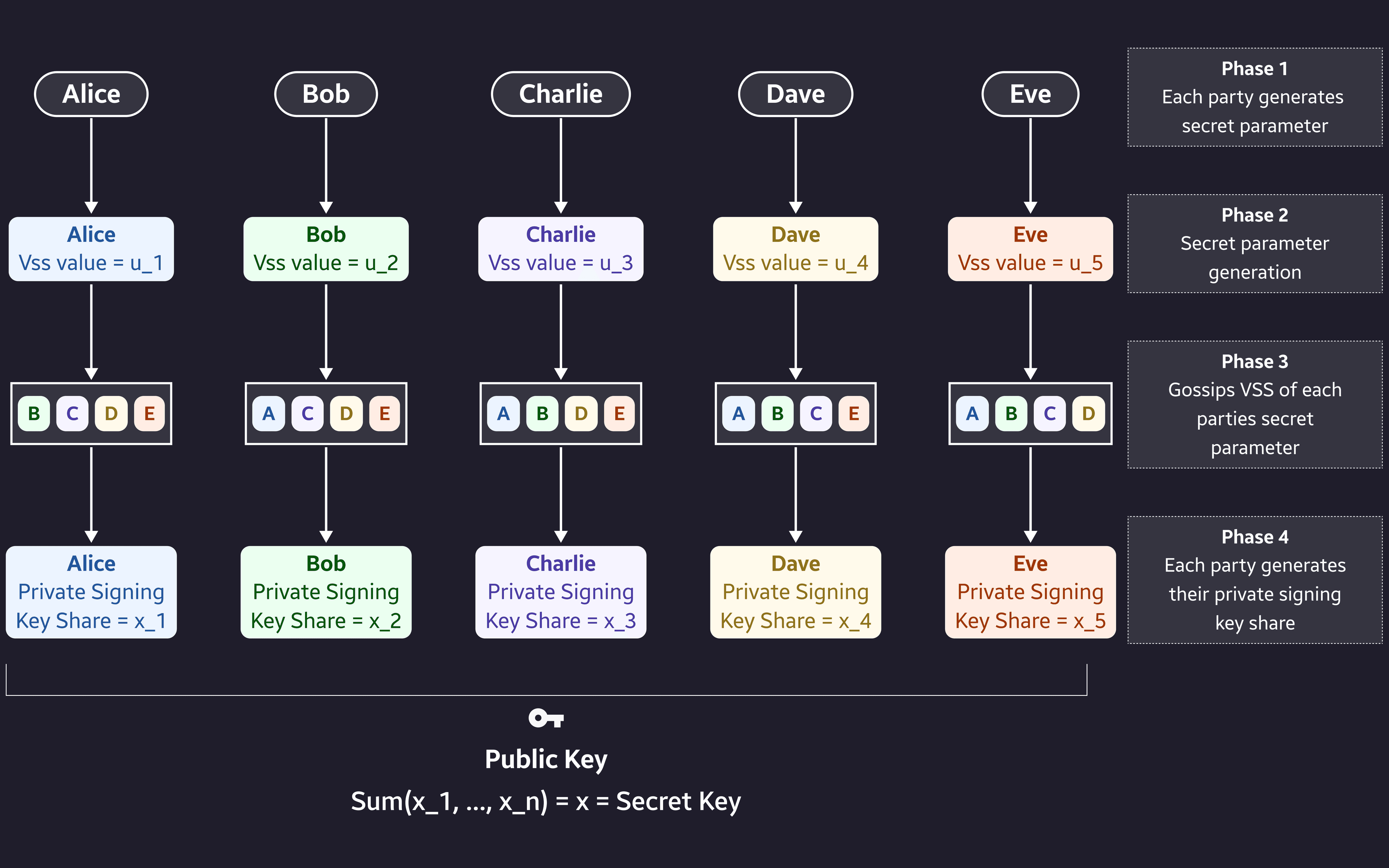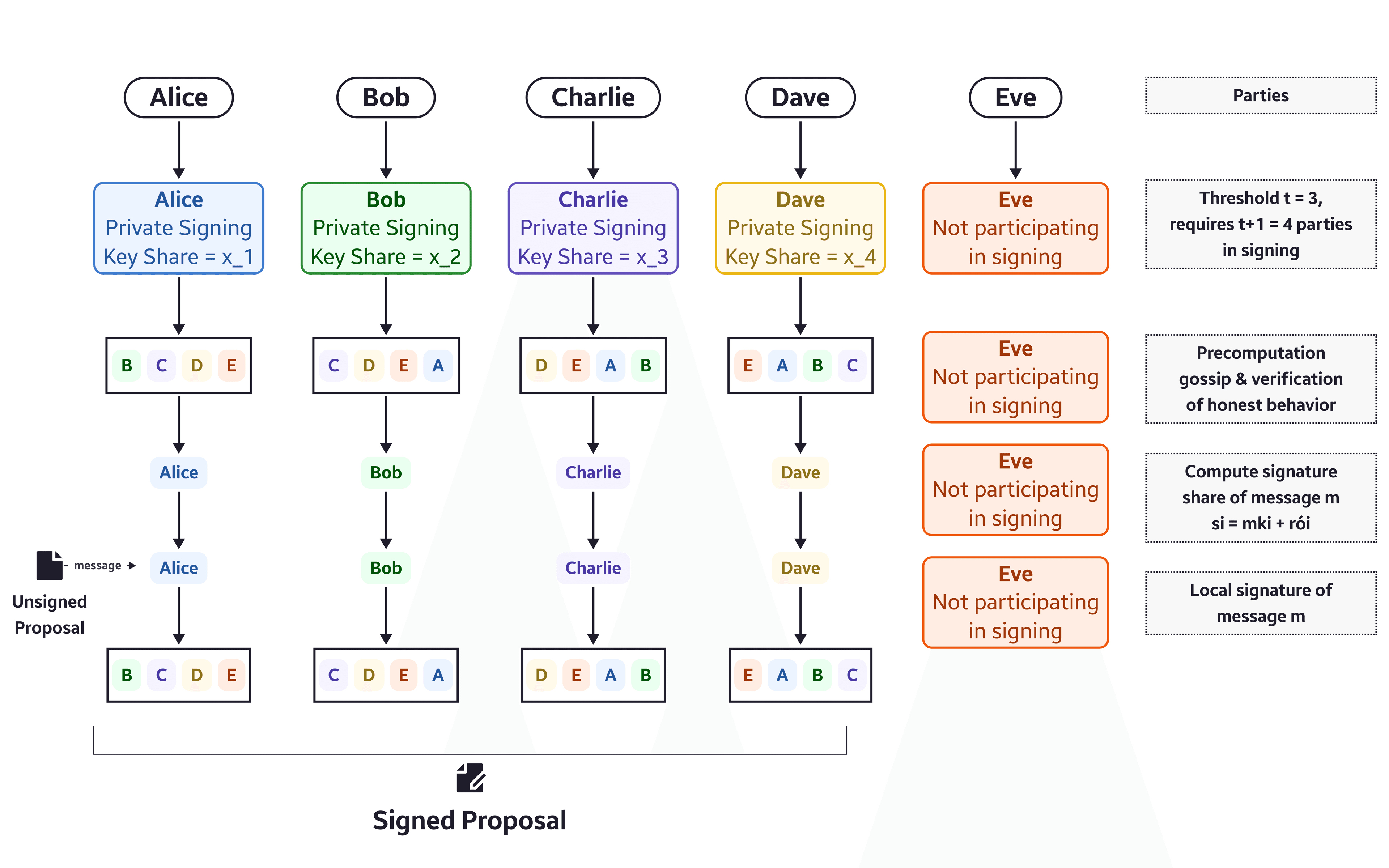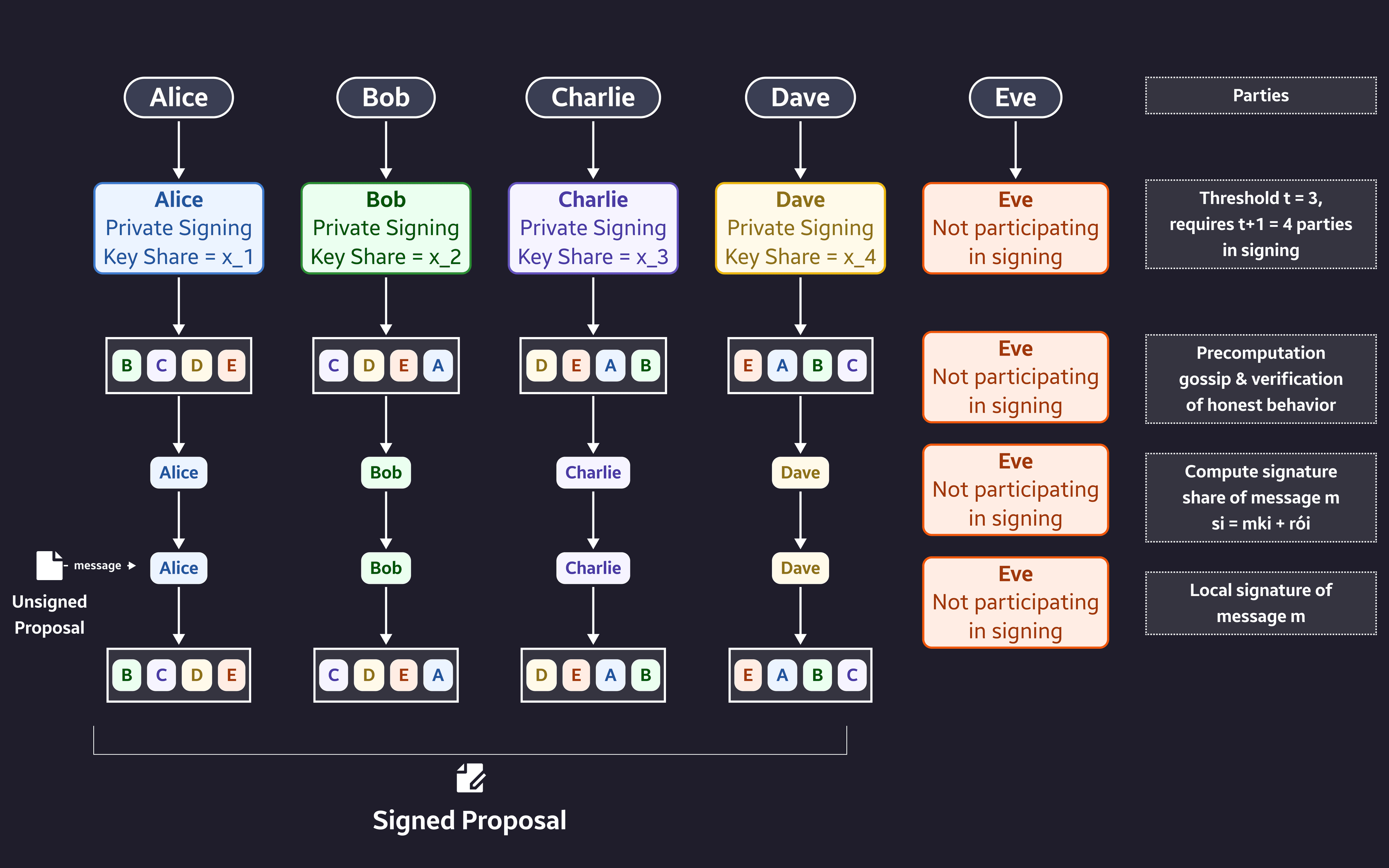Distributed Key Generation Protocol
This page will provide an overview of the Distributed Key Generation (DKG) protocol, what it is, its intended use, and how it interacts with the wider system.
The primary purpose of the DKG protocol is to govern the Anchor System. More precisely, the DKG act as a security instrument to the Anchor System, that is, we say that the bridge updates are valid if they are signed by the DKG. The security of the system then rests on the DKG signing the actual data that it is meant to sign. Effectively, trust is placed in the DKG.
What is a DKG
A DKG (opens in a new tab) stands for a distributed key generation protocol. It is a cryptographic multi-party protocol in which multiple parties contribute to the creation of a shared public and private key. This keypair can then be used for different use cases such as signing and encryption. We call the output of these use cases threshold signatures and threshold encryptions respectively. In the Webb ecosystem, our DKG is primarily used for generating threshold signatures. It is comprised of two protocols that each network participants runs independently:
- Threshold-key-generation
- Threshold-signature-scheme
The (1) distributed key generation protocol takes a secret parameter as input, and outputs the private signing key (sk) and public key (pk). The returned private signing key (sk) is only a share of the private key, where the values of all returned private signing key shares constitute a (t,n) threshold secret sharing of the private signing key.


The (2) distributed signing protocol takes the private signing key (sk) of each network participant, and the message to be signed (m) as inputs. The output is a valid signature. The public input message are updates (proposals) that are being signed using a threshold-signature-scheme.


The DKG makes use of these distributed key generation and signing protocols to govern distributed applications, namely the Anchor System. Each distributed application in question has a variety of parameters it needs to govern. These parameters can be as simple as individual integer values or byte array or as complicated as entries in a key/value storage map.
Distributed applications using the DKG define a protocol for handling signed messages. After verifying the signature of such a message, the application handles the message contents by mutating its internal state with the newly received data.
We additionally utilize any number of pre-processing protocols for decided what the DKG signs with the purpose of improving the security of the end-user applications. Since we trust signatures from the DKG without fault, we must ensure messages proposed for signing are not proposed maliciously. An example of such a system is a majority voting protocol, i.e. that a majority of parties signal validity over a message before the message is processed by the DKG.
Want to learn more?
Contribute to the Webb DKG Protocol
We are actively making improvements to the Webb DKG Protocol. Check out the below DKG repository and source documentation to start. Have feedback to share about a Webb relayer? We want to hear from you, share your thoughts here (opens in a new tab).
Please keep in mind that this repo is in active development, and may not be fully functional. If you find a bug, please report it here (opens in a new tab).